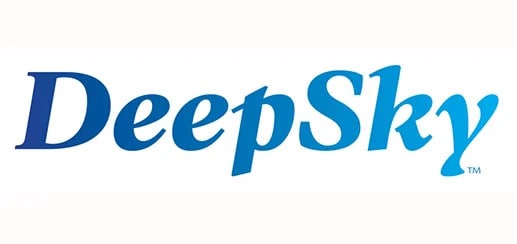The third-party logistics (3PL) and warehousing industry, once a booming sector fueled by the rapid growth of e-commerce, is now facing a pronounced downturn, with 2023 and 2024 becoming a few years to forget for 3PLs. In a year marked by economic uncertainty, industry players grapple with declining sales, a drop in new business leads, and intensifying competition. The ripple effects of these challenges are being felt across the sector, with some companies reconsidering their business models while others face existential threats.
The Decline in Demand: A Closer Look
According to industry reports, fewer companies are seeking third-party warehousing solutions this year, marking a significant shift from previous years. In 2023, 3PLs specializing in international transportation management (ITM) experienced significant drops in air and ocean demand and rates. Global air cargo freight rates fell by 41% in the second quarter compared to the previous year.
Although air cargo capacity and revenues began to recover towards the end of last year following 17 months of continuous decline, ITM has seen a modest rebound since the first half of 2023. As a result, the ITM 3PL segment experienced its largest decline in Compound Annual Growth Rate (CAGR) since 2010 in 2023, with a decrease of 4.1% compared to a 7.8% CAGR in 2022, due to reduced air and ocean rates and demand. On the other hand, Domestic transportation management (DTM) 3PLs shifted their focus to contractual transportation management and managed services rather than spot market freight brokerage as truckload demand decreased and rates fell below the five-year average, leading to a freight recession.
This downturn affected a broad range of services, including last-mile delivery providers that had previously thrived due to strong e-commerce demand during the pandemic. Armstrong & Associates reports that net revenues for the U.S. 3PL market decreased by 12.8% to $129 billion in 2023. Meanwhile, overall gross revenues dropped by 26.1%, totaling $299.5 billion for 2023. This represents a return to levels not seen since before 2021, a year that experienced a significant 48.1% growth.
This decline in demand has left many 3PL providers with lower sales and reduced opportunities. One industry insider shared that their business is down by 50% compared to previous years.
This stark reduction in new business opportunities indicates a broader industry trend.
Unpacking the Contributing Factors of the 3PL Downturn
As global trade evolves and supply chains face unprecedented disruptions, the 3PL industry is now dealing with a daunting range of challenges. The factors that contribute to this downturn are:
Increased Competition in the 3PL Industry
One of the most pressing issues is the apparent oversaturation of the market. The market has also become increasingly competitive, with too many 3PL providers vying for a shrinking pool of clients. In recent years, the rapid growth of e-commerce and the global shift towards online retailing led to a boom in the demand for warehousing and fulfillment services.
As more companies entered the market, competition intensified, leading to price wars that eroded industry profit margins. Specifically, the rise of Amazon’s Upstream Warehousing initiative has disrupted the traditional logistics landscape. This initiative is part of its broader strategy to streamline its logistics network and reduce reliance on external 3PL providers.
As a result, many companies that once relied on third-party warehousing services are now shifting their logistics operations to Amazon’s streamlined system. This shift has had a major impact on the 3PL industry, with some providers reporting a dramatic drop in business. Moreover, Amazon takes the No. 1 spot in the Transport Topics Top 100 logistics list. Previously excluded due to unclear distinctions between its merchandising and third-party logistics operations, Amazon now stands out with an estimated 255 million square feet of 3PL warehousing space spread across 411 warehouses in North America.
While Amazon’s reported revenue of more than $140 million comes from Amazon’s third-party seller services segment, which encompasses its 3PL operations along with commissions, fulfillment, shipping fees, and other related services, Armstrong & Associates believes that Amazon’s 3PL services drive the majority of this revenue. This estimate is based on Amazon’s extensive warehousing footprint and its focus on e-commerce fulfillment.
Even if only 50% of this revenue, or $70 billion, is attributed to 3PL services, Amazon would still be the largest 3PL provider in North America and globally. And the increasing dominance of Amazon in the logistics and warehousing sector is putting immense pressure on smaller 3PL companies, some of which are struggling to stay afloat.
Economic and Political Uncertainty Scare the 3PL World
Economic uncertainty, rising labor costs, and fluctuating real estate prices have also all dampened demand. Some industry players suggest that companies rationalize their SKUs and discontinue underperforming products, reducing the need for extensive warehouse space.
According to a recent CBRE report, in 2023, general retailers and wholesalers dominated the leasing of big-box warehouse space in North America, making up 36% of all transactions. This marks a shift from the previous year when 3PL providers held the top spot as the largest occupiers of warehouse space. Moreover, vacancy rates and rent growth are both on the rise within the industrial and logistics sectors.
As the market navigates these uncertainties, CBRE’s updated forecast suggests a more restrained growth trajectory for 3PLs, highlighting the broader impact of economic factors on industrial real estate. The post-pandemic landscape has also dramatically increased labor costs, which continues to squeeze profit margins. Combined with the soaring costs of commercial real estate, these factors have created an environment where profitability is increasingly elusive for many 3PL companies.
Political uncertainty is another factor causing hesitation in the market. As one industry participant noted,
The upcoming election and potential changes in trade policies are causing companies to adopt a wait-and-see approach, further stalling growth in the industry.
Adapting to the New Market Realities
Current market conditions have forced 3PL and warehousing companies to adapt their business strategies in order to survive. Here’s how various companies are strategically managing the current downturn:
Smaller Deal Sizes
Many of the bigger players in the industry are increasingly looking at smaller deals than they had previously considered, often accepting these contracts at break-even points just to fill their warehouses. This trend is evident in recent earnings reports of XPO Logistics, which have noted a shift toward smaller, lower-margin contracts.
3PL Mergers and Acquisitions
Mergers and acquisitions (M&A) activity is also rising as companies with financial backing seek to acquire smaller firms that can complement their existing infrastructure or expand their reach into new markets. During the first half of 2024, the total value of M&A deals increased by 5% compared to the same period in 2023. This trend could relieve smaller warehousing companies struggling to stay afloat, as they may become attractive acquisition targets for larger players seeking to bolster their market position.
However, M&A activity in the 3PL sector is not without its challenges. The current economic climate has made it difficult for companies to secure financing for acquisitions, and the uncertainty surrounding the future of the market is causing many to proceed with caution. Nonetheless, for those with the resources and appetite for risk, M&A remains a viable strategy for growth and consolidation in an increasingly competitive market.
A Change in Presentation Method
Additionally, some companies have begun to innovate and adapt to the changing landscape. For instance, one company reported that they have seen an increase in sales by changing their presentation method and adopting a more fluid pricing model.
Technology and New Sales Channels
Another strategy that has proven successful for some is helping its existing customers grow their businesses as a way to offset the decline in new client acquisitions.
The automation of spot market truckload management and carrier sales functions is also becoming a key competitive edge in the DTM segment. Using AI and machine learning, freight brokers can digitally match shippers’ loads to carriers, increasing efficiency and carrier loyalty by reusing top-performing carriers at competitive rates. Leading freight brokers like C.H. Robinson and Uber Freight are among those driving this automation, enhancing carrier management and overall operations.
Some companies have also turned to third-party sources like ZoomInfo to gather specific information for marketing, while others have begun offering additional services, such as third-party sales analysis platforms, to help their customers grow their businesses.
A Mixed Outlook For 3PLs
While the overall picture for the 3PL and warehousing industry is bleak, there are some companies that have managed to buck the trend. For some of the companies in the sector, sales are up compared to last year, largely due to their efforts to explore additional sales channels and opportunities.
Still other 3PLs have fared better than others simply because of the mix of products that they store and ship. As an example, 3PLs that serve food grade products have done slightly better, simply because the dampened global economics haven’t impacted sales as significantly as other segments.
Looking ahead to next year, the impact on the 3PL sector will likely be shaped by the ability of companies to adapt to changing market conditions. Those leveraging technological advancements and expanding their service offerings may continue to see positive results, while others could face ongoing challenges if they cannot adjust to the evolving landscape. This divergence in performance will likely shape the competitive dynamics within the sector, influencing market trends and company strategies in the coming year.
The Road Ahead for Third-Party Warehousing Companies
One thing is clear: the downturn in the third-party warehousing market is a significant concern for industry stakeholders. As companies face reduced demand, increased competition, and external pressure, the road ahead will require resilience, adaptability, and innovation. For now, the focus for many will be on survival, with a keen eye on potential opportunities for consolidation and strategic partnerships in the future.


















Leave a Comment